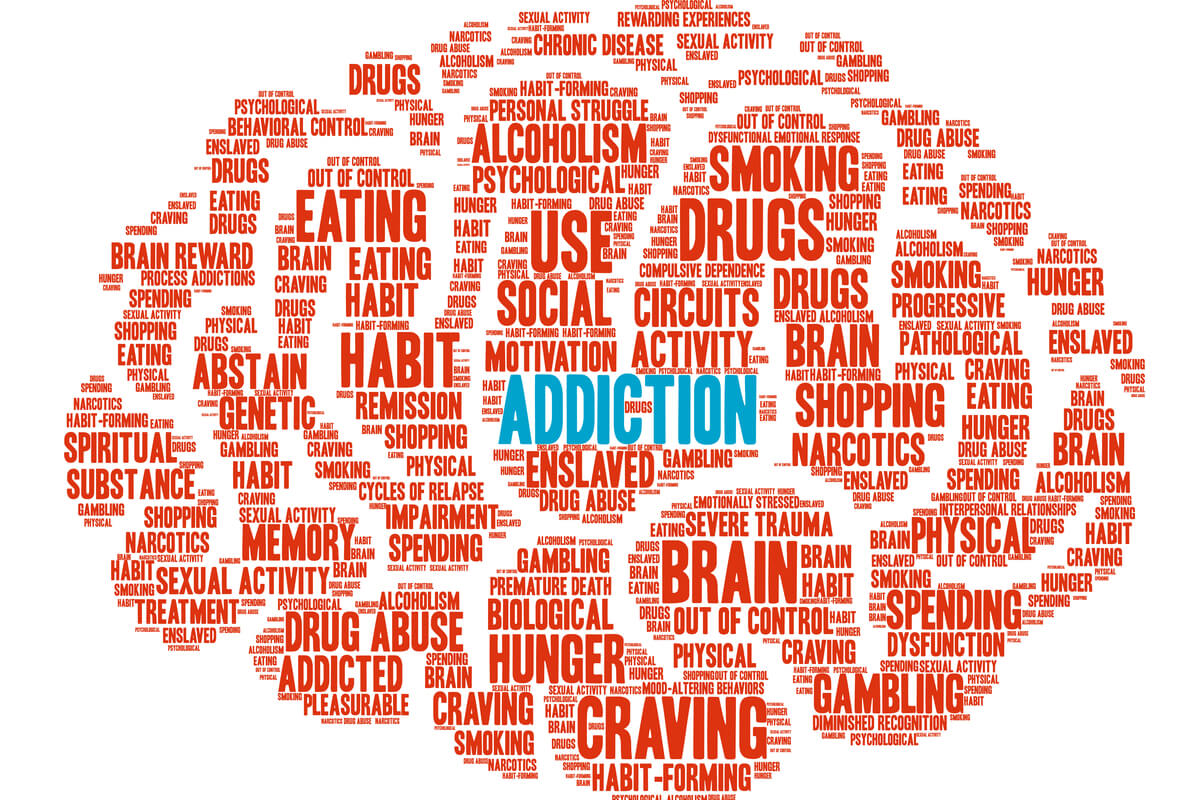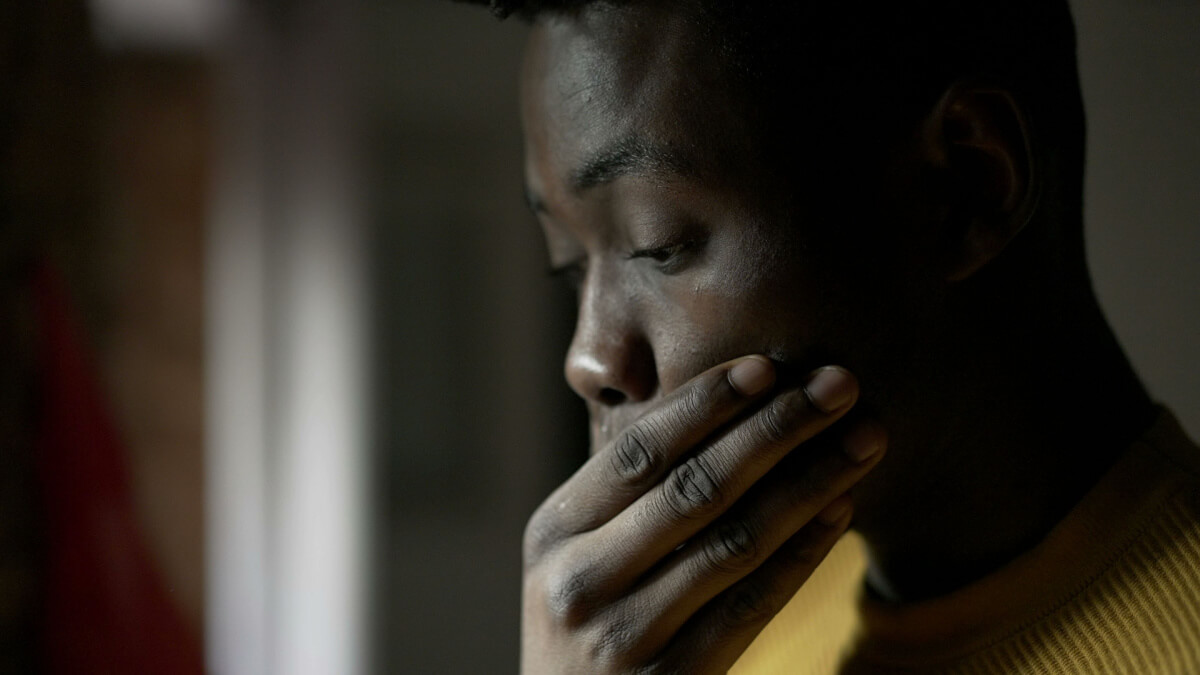
Sexual abuse is extremely common — both in the United States and around the world. Both men and women can be victims and abusers. Abuse can happen at work, at school, or at home.
Understanding what sexual abuse is (and how it differs from sexual harassment) is a good first step. When we know what an attack looks like, we can step in and help when we see it happening in our communities.
If you’ve been attacked, know that the incident wasn’t your fault. Victims are never to blame for what happened to them.
An assault can have a deep impact on your physical and psychological health. It can impair your ability to develop healthy relationships in the future. It can also raise your risk for substance use disorders (SUDs).
If you are the victim of sexual assault or abuse, there are a plethora of resources to help you recover. Find out more here.
What Is Sexual Abuse?
Sexual abuse is unwanted sexual contact, either physical or verbal, forced on one person by another.
Among adults, sexual abuse can take many forms, including unwanted advances from strangers or forcible assault by someone you know.
In children under 16 years old, sexual abuse involves all sexual touching between an adult and a child.[1]
How Common Is Sexual Abuse?
An American is sexually assaulted every 68 seconds.[2] Sometimes, these incidents make the national news. When a woman is pulled from her morning jog and assaulted, we see the headlines in the paper.
But much more often, sexual abuse happens in private, often repeatedly. The vast majority of sexual assault is not reported and sadly, is not addressed or prevented. It is known that sexual abuse and assault are vastly under-reported.
Key Facts About Sexual Abuse
- One American woman in five has experienced rape or attempted rape during her lifetime.[3]
- While sexual abuse is often associated with women, men are attacked too. Almost 25% of American men have experienced some kind of sexual abuse during their lifetimes.[3]
- More than 80% of women and close to 44% of men have experienced some kind of sexual harassment or assault during their lifetimes.[4]
- Women of color experience more sexual violence. More than two non-Hispanic multiracial women in five have been raped in their lifetime.[5]
- While women often fear attacks perpetrated by strangers, most attacks come from people the victim knows. More than 640 million women 15 and older have been victims of intimate partner violence from their spouse or romantic partner.[6]
- Almost 50% of victims report sexual assault occurring in their home or place of residents. [2]
What Are the Different Types of Sexual Assault?
Terms like sexual assault and sexual violence are umbrella phrases that refer to crimes like rape and sex-based abuse.[7] Many of these assaults are crimes at the state and federal level.
Sexual Assault
Sexual contact that occurs without the victim’s consent is sexual assault. A sexual assault can include the following:
- Rape
- Sodomy
- Forced oral sex
- Attempted rape, sodomy, or forced oral sex
But sexual assault can also include unwanted sexual touching. Both men and women can be victims of sexual assault, and both men and women can be perpetrators too.
Child Sexual Abuse
Sexual contact between an adult and a child, regardless of the circumstance, is child sexual abuse. States may define “minor” status differently, but in general most states define being a “minor” unable to consent to sexual activity as anyone under 16 years of age.
Incest
Sexual contact between family members is incest. This can mean sexual contact between a parent and child, uncle/aunt and niece, nephew, etc.
Drug-Assisted Sexual Assault
Some perpetrators use substances like alcohol or other sedative drugs to incapacitate victims before assault. Sometimes, the perpetrators sprinkle substances into open beverages, intoxicating victims without their awareness. But sometimes, they provide substances like alcohol, encourage the victim to partake, and start the attack when the victim is inebriated.
Signs & Symptoms of Sexual Abuse
Every victim is different, and assaults can take many forms. Some victims have no outward symptoms at all, but there are subtle shifts people can look for.
Victims of sexual abuse often have the following:[8]
- Injuries: Bruises on intimate areas are common. But victims may also have bruises and cuts from physical violence meant to subdue them before the attack. Some victims have vaginal or anal bleeding they can’t explain.
- Infections: Some victims develop venereal diseases or genital infections caused by the contact.
- Mood and Personality changes: The victims may experience changes in mood and personality as a result of trauma from unwanted sexual experiences
Victims may tell people about the sexual abuse. If someone tells you about an attack, listen and believe them. Your listening ear could be the encouragement the individual needs to seek either medical or legal help.
Measuring the Impact of Sexual Assault
Identifying the full cost of sexual assault is difficult. Here are some long term impacts of sexual assault:
Mental Health
People who have been raped or sexually assaulted have a higher risk of the following:[9]
- Anxiety
- Depression
- Eating disorders
- Post-traumatic stress disorder (PTSD)
- Substance use disorders (SUD)
Physical Health
Some sexual assaults are violent, and victims can emerge with internal and external physical injuries. Some rape victims spend weeks in the hospital, and they need treatment for broken bones and lacerations. Unwanted pregnancy is also another consequence: Almost 3 million American women experience a rape-related pregnancy during their lifetimes.[10]
Relationships
Many sexual assaults involve romantic partners. A victim emerges with difficulty forming appropriate attachments to others. Researchers say many victims experience the following:[11]
- Fear of entering new relationships
- Altered perceptions of healthy dating behavior
- PTSD and other mental health issues triggered by a new relationship
- Victimization by their new partners
What Is Sexual Harassment?
While sexual abuse involves unwanted physical sexual contact, sexual harassment is a broader term that encompass verbal abuse.
Sexual harassment can include the following:
- Sexual advances
- Requests for sexual favors
- Sex-based teasing or suggestions
- Sexual language or inuendo
Both the victim and the harasser can be a woman or a man. Sometimes, an abuser and victim can be of the same sex.[12]
Sexual abuse is almost always a criminal matter. Victims can go to police officers and file charges, and a perpetrator could face jail time if convicted.
Sexual harassment is typically a civil matter.[13] Victims often must speak to their employers to make the abuse stop, and the penalties can vary from company to company. They can also pursue legal action against the perpetrator when appropriate though a formal lawsuit.
Top Statistics About Sexual Harassment
- Verbal attacks are the most common form of sexual harassment. 77% of women and 34% of men have experienced verbal harassment at some point [4]
- Most sexual harassment incidents happen in public spaces. 1 in 3 women reports having experienced sexual harassment in their lifetime. [5]
- About 1 in 7 woman and 1 in 17 men have changed their employment details (including finding a new job or asking for a different assignment) due to sexual harassment.[14]
Harassment in the Workplace
All people have the right to do their work in a safe environment. But sexual harassment is pervasive in American workplaces, and changing the culture is difficult.
Employers are largely responsible for training their employees and punishing perpetrators.[15] As the issue of work place sexual harassment becomes more discussed, many work places have made real efforts to educate and prevent work place harassment. In spite of this, plenty of people still go to work each day knowing they will be taunted, teased, or propositioned while they’re on the job.
Sexual Assault in the Workplace
Sexual assault can also occur in the work place. The same types of assaults that can happen to a woman or man at home can happen to them at work.
Sexual Assault in College
To a student, a college or university is a workplace. And just like adults get attacked while they’re at work, far too many students are assaulted while they’re in school.
About 13% of all students are raped or assaulted through the following:[16]
- Physical force: They are held down and forcibly made to participate in a sex act.
- Violence: They are physically hurt or threatened with bodily harm if they don’t comply.
- Inability to consent: They are drugged or otherwise incapacitated and unable to agree to the sexual contact.
Sexual assault can occur when the perpetrator is a stranger or – more commonly – a friend, or someone known to the victim.
Sexual Assault & Substance Abuse
Overall, 13% of students report nonconsensual sexual contact prompted by violence or an inability to consent.[17] Substances often play a role. Substances hinder the victim’s ability to consent to sexual activity.
While drugs like GHB often grab headlines as “date-rape drugs,” the most common substance involved in cases of sexual assault is still alcohol.
Healing From Sexual Abuse
Every person who has experienced sexual violence will need time and support to heal. The time line varies from individual to individual.
Many people heal by pursuing justice, often in the form of legal action against a perpetrator. Seeing an attacker face prison time is a way to regain a sense of power and agency, and some people find that it’s very helpful and healing.
Others benefit from coming to terms with the assault privately rather than discussing the issue in court, and may prefer not to take legal action.
Both groups may benefit from counseling and even more formal or long term therapy to help them process the trauma.
Why Don’t More Victims Come Forward?
In 2018, only 25% of estimated rapes were reported to police.[3] The reasons for this omission are personal and can vary from victim to victim, but some common themes are shared.
Only 1 in 10 people who are sexually harassed comes forward, and most don’t due to the following:[18]
- Lack of understanding about the rules and requirement of legal action
- Embarrassment about the attack
- Fear of retaliation
- Cost of legal fees
Victims of sexual assault may not know where to go to report the rape, or they may feel ashamed about the nature of the attack, particularly if substances were involved.
Gender differences may play a role too: In a Pew Research study of sexual harassment, 46% of women reported not being believed after disclosing an assault, while only 18% of men said the same.[19]
How to Support a Survivor
If someone discloses sexual harassment or an assault, listen. Don’t question how the attack began or suggest that the victim is to blame. In fact, don’t ask questions at all. Instead, let the victim tell you what happened.
If it’s appropriate, offer to investigate solutions together. Perhaps the person needs to learn more about where to report the incident. And maybe the person would like your help in starting an investigation.
On the other hand, some victims don’t want their friends and family to fix the assault. Instead, they simply just want support. Let the person tell you how to be most helpful to them.
Therapy Options for Sexual Abuse Survivors
Psychotherapy offers survivors the option to work through trauma and develop coping skills. For many people, therapy provides the opportunity for the victim to speak freely about what happened with a neutral party, which can be hard for them to do in front of friends and family.[20]
Trauma-based approaches allow survivors to walk through the attack step by step until they become less sensitized to the sights, sounds, and smells that remind them of the event.
Cognitive behavioral therapy approaches allow survivors to explore their thoughts, feelings, and skills related to the event. In time, they can learn to manage triggers and navigate their new lives.
Certain people respond better to different types of therapy. There is no “right” type of therapy. The right type of therapy will be what works best for you and your individual circumstances. Your therapist can help you find the approach best for you.

Medically Reviewed By Elena Hill, MD, MPH
Elena Hill, MD; MPH received her MD and Masters of Public Health degrees at Tufts Medical School and completed her family medicine residency at Boston Medical Center. She is currently an attending physician at Bronxcare Health Systems in the Bronx, NY where ... Read More
- Defining Child Sexual Abuse. Stop it Now. https://www.stopitnow.org/ohc-content/defining-child-sexual-abuse. Accessed September 2022.
- Scope of the Problem: Statistics. RAINN. https://www.rainn.org/statistics/scope-problem. Accessed September 2022.
- Statistics. National Sexual Violence Resource Center. https://www.nsvrc.org/statistics. Accessed September 2022.
- 2018 Study on Sexual Harassment and Assault. Stop Street Harassment. https://stopstreetharassment.org/our-work/nationalstudy/2018-national-sexual-abuse-report/. Accessed September 2022.
- Fast Facts: Preventing Sexual Violence. Centers for Disease Control and Prevention. https://www.cdc.gov/violenceprevention/sexualviolence/fastfact.html. June 2022. Accessed September 2022.
- Facts and Figures: Ending Violence Against Women. UN Women. https://www.unwomen.org/en/what-we-do/ending-violence-against-women/facts-and-figures. February 2022. Accessed September 2022.
- Types of Sexual Violence. RAINN. https://www.rainn.org/types-sexual-violence. Accessed September 2022.
- Types and Signs of Abuse. Washington State Department of Social and Health Services. https://www.dshs.wa.gov/altsa/home-and-community-services/types-and-signs-abuse. Accessed September 2022.
- Sexual Assault and Mental Health. Mental Health America. https://mhanational.org/sexual-assault-and-mental-health. Accessed September 2022.
- Understanding Pregnancy Resulting from Rape in the United States. Centers for Disease Control and Prevention. https://www.cdc.gov/violenceprevention/sexualviolence/understanding-RRP-inUS.html. June 2020. Accessed September 2022.
- The Long-Term Effects of Sexual Assault on Romantic Relationships: A Qualitative Study. University of New Hampshire. https://scholars.unh.edu/cgi/viewcontent.cgi?article=2429&context=thesis. Fall 2020. Accessed September 2022.
- Sexual Harassment. U.S. Equal Employment Opportunity Commission. https://www.eeoc.gov/sexual-harassment. Accessed September 2022.
- Sexual Harassment. RAINN. https://www.rainn.org/articles/sexual-harassment. Accessed September 2022.
- Ending Sexual Assault and Harassment in the Workplace. National Sexual Violence Resource Center. https://www.nsvrc.org/ending-sexual-assault-and-harassment-workplace. Accessed September 2022.
- Fact Sheet: Sexual Harassment Discrimination. U.S. Equal Employment Opportunity Commission. https://www.eeoc.gov/laws/guidance/fact-sheet-sexual-harassment-discrimination January 1997. Accessed September 2022.
- Campus Sexual Violence: Statistics. RAINN. https://www.rainn.org/statistics/campus-sexual-violence. Accessed September 2022.
- A Crisis of Campus Sexual Assault. American Psychological Association. https://www.apa.org/monitor/2022/04/news-campus-sexual-assault. April 2022. Accessed September 2022.
- Sexual Harassment and Assault at Work: Understanding the Costs. Institute for Women's Policy Research. https://iwpr.org/iwpr-publications/briefing-paper/sexual-harassment-and-assault-at-work-understanding-the-costs/. October 2018. Accessed September 2022.
- Sexual Harassment at Work in the Era of #MeToo. Pew Research Center. https://www.pewresearch.org/social-trends/2018/04/04/sexual-harassment-at-work-in-the-era-of-metoo/. April 2018. Accessed September 2022.
- How Can Therapy Help? RAINN. https://www.rainn.org/articles/how-can-therapy-help. Accessed September 2022.
Download Our Free Program Guide
Learn about our program, its effectiveness and what to expect
Related articles
Imagine what’s possible on the other side of opioid use disorder.
Our science-backed approach boasts 95% of patients reporting no withdrawal symptoms at 7 days. We can help you achieve easier days and a happier future.








